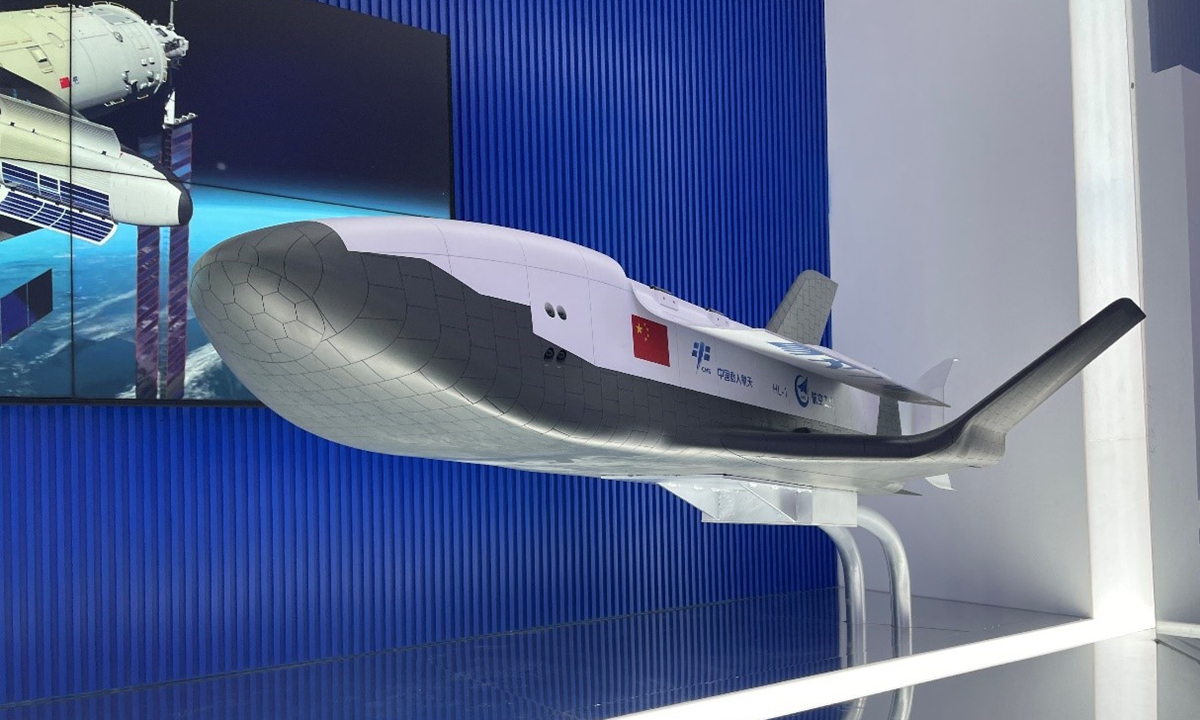
The model of a Haolong spacecraft is on display at the exhibition hall of the Aviation Industry Corporation of China at the Airshow China 2024 in Zhuhai, South China's Guangdong Province from November 12 to 17, 2024. Photo: Liu Xuanzun/GT
China's newly announced space cargo shuttle, the Haolong, has become a highlight of the ongoing Airshow China 2024. Its chief designer Fang Yuanpeng told the Global Times that the spacecraft has entered the engineering development phase, and the public can expect to see it soon.
The Haolong space cargo shuttle is developed by the Chengdu Aircraft Design and Research Institute under the state-owned Aviation Industry Corporation of China (AVIC). The institute developed several types of Chinese fighter jets, including the J-20, the J-10 and the FC-1, all featuring "long," meaning dragon in Chinese, in their nicknames.
Fang said that if an aircraft needs to enter space orbit, it needs to take into account all the effects of the space environment on the vehicle, so many design concepts of a space shuttle needs to consider both aeronautics and spaceflight. But the main challenge is still the aerodynamic design, he said.
The Haolong features a large wingspan design with high lift-to-drag ratio. It is about 10 meters long and eight meters wide. This design means that the spacecraft has relatively high maneuverability within the atmosphere, and that it has more reentry opportunities, according to Fang.
According to Fang, the space shuttle Haolong can be launched into orbit via a commercial carrier rocket once loaded with cargo. After entering orbit, the Haolong will unfold its solar panels and open its docking shield. After maneuvers to close in on the space station, the rear of the Haolong will dock with the space station, and astronauts can access Haolong's cargo bay to pick up and store goods. After completing the mission, the Haolong will leave the space station, depart from the orbit and reenter the atmosphere, before landing on an airport horizontally.
The Haolong can receive maintenance similar to an aircraft after landing, so it can conduct another mission, according to Fang. Its reusability means that the full life cycle cost is significantly lowered, he said.
The development of the spacecraft is divided into design, engineering development, and cargo mission phases. Fang revealed that the design phase is already complete, and the engineering development phase is underway. "I believe that the public will see it soon," he said.




